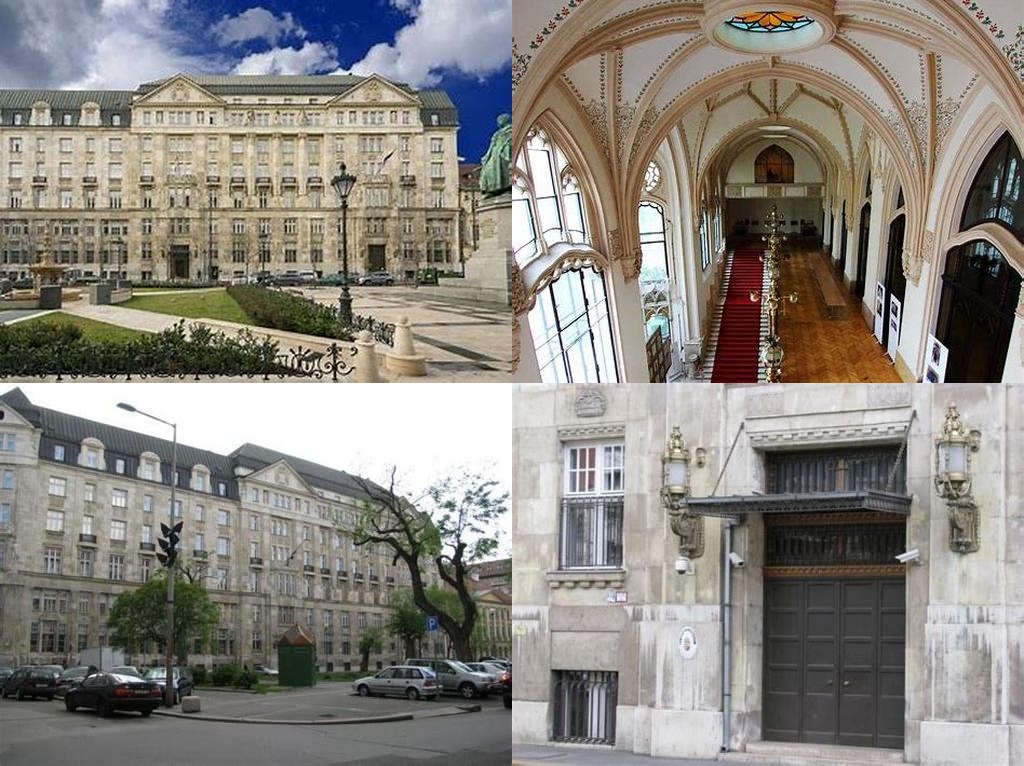
Pénzügyminisztérium sits in the heart of Budapest, staring majestically over Kossuth Lajos tér, not far from the glittering Danube. If you’ve wandered through the city’s stately government quarter, there’s a good chance this grand edifice has caught your eye. The Ministry of Finance seems poised at the intersection of history and ongoing transformation, embodying more than just the business of balancing Hungary’s books. For a traveler with a keen eye on architecture, history, or the subtle workings of government power, a visit to this landmark reveals layers of story you won’t find in guidebooks touting the usual tourist draws.
Construction began in 1899 and wrapped up in the early years of the 20th century, capturing the blend of historicist and eclectic styles so typical of the city’s Golden Age. The building’s main designer, Sándor Fellner, anticipated that his work would need to impress not just in the present, but as a testimony to Hungary’s enduring stature. Stand at the foot of its ornate façade, and you can almost feel the optimism of the fin-de-siècle era that produced such civic pride. Look up, and the rows of massive windows, pillars, and allegorical sculptures remind you that this isn’t just an office block—it’s a monument to civic ambition and the responsibility of stewardship. Brass plaques bear the marks of change: over more than a century, Hungary’s Ministry of Finance has weathered wars, regime changes, and economic revolutions.
One of the more fascinating aspects of exploring the Pénzügyminisztérium is placing it in the bigger context of Hungarian history. During World War II, like so many structures in Budapest, the Ministry suffered damage, but it resiliently returned to its role in peacetime rebuilding. The stones and columns you see today carry echoes of an evolving nation—from the turbulence of the 1956 revolution to the market transformations after 1989. This is where some of the biggest economic decisions in Hungarian history were hashed out, right at the edge of Parliament Square. The Ministry’s staff today carry on the tradition, but thankfully you don’t need an appointment with a civil servant to appreciate the gravity of the place.
The most accessible delights for visitors come from the camera-friendly exterior and its setting among other grand institutions. Set against the neo-Gothic spires of the Parliament, the Ministry’s pale stone and sculpted detailing serve as a textural counterpoint, which makes for superb photos at all hours. You’ll likely share the plaza with students, journalists, the odd dignitary, and fellow architecture buffs. The constantly shifting play of sunlight over the Ministry’s façades invites lingering, and as you circle the block you’ll spot details tucked into arches and pylons—the work of celebrated sculptor Gyula Donáth can still be identified. Engraved on these stones are depictions of trade, commerce, even scenes of everyday life, echoing the Ministry’s original aim of representing the financial backbone of the nation.
While entry to the interior is restricted (unless you happen upon one of the rare public events or guided tours), the surroundings are wide open for exploration. There’s a particular pleasure in starting from the Pénzügyminisztérium, then wandering southward toward the river or slipping down quiet side streets that hint at once-glittering Belle Époque apartment blocks. Each street corner around here reveals another layer of Budapest’s history—often tied, one way or another, to the Ministry’s long watch over the nation’s purse strings.
If your idea of a memorable trip includes discovering the underappreciated figures and places that have shaped a city’s past and present, give this landmark its due. The Pénzügyminisztérium isn’t simply a backdrop for parliamentary drama; it’s a protagonist. Its dignified face on Parliament Square serves both as a window into Hungary’s grand narrative and an invitation to look that little bit closer at the stories etched into the city’s architectural heart.





